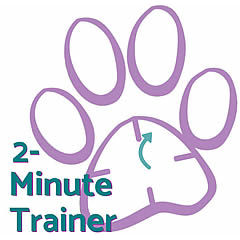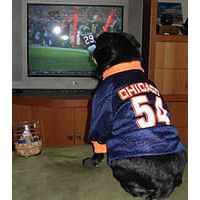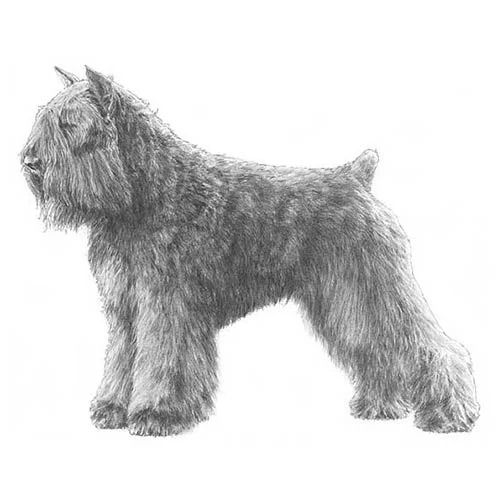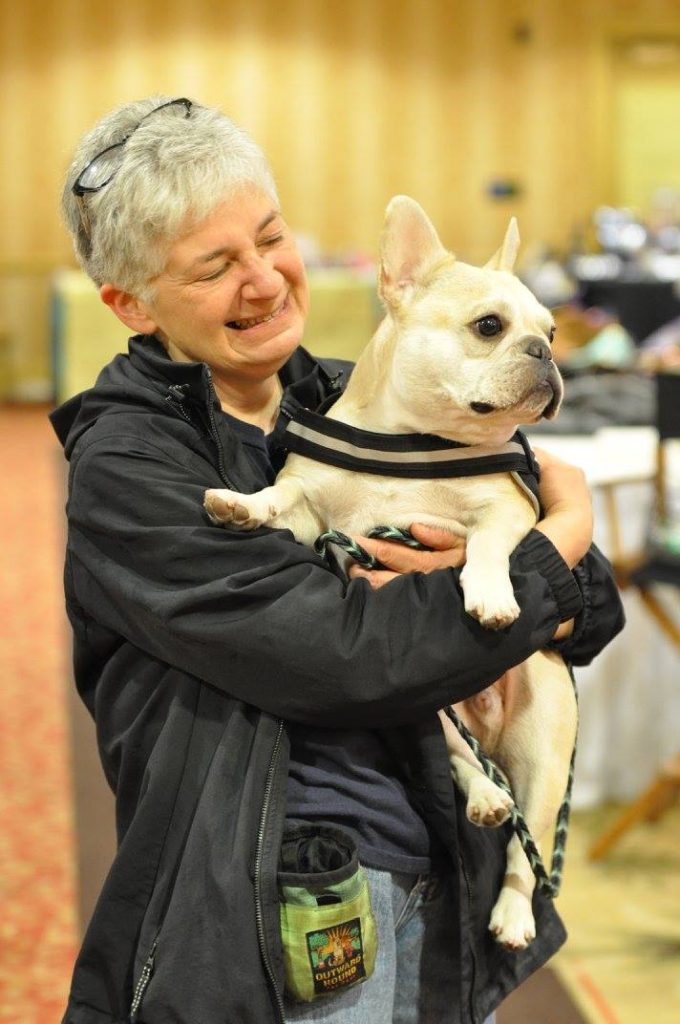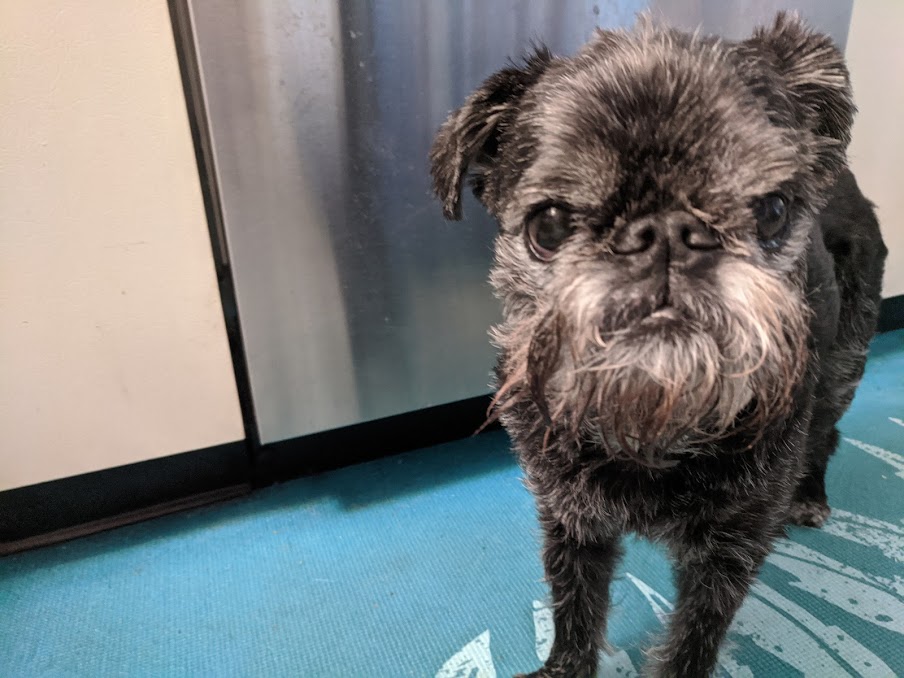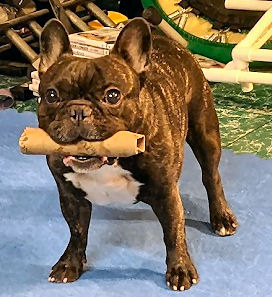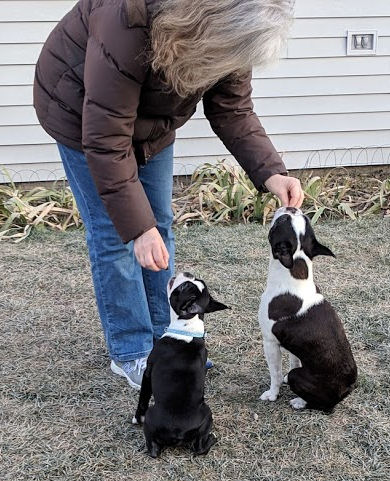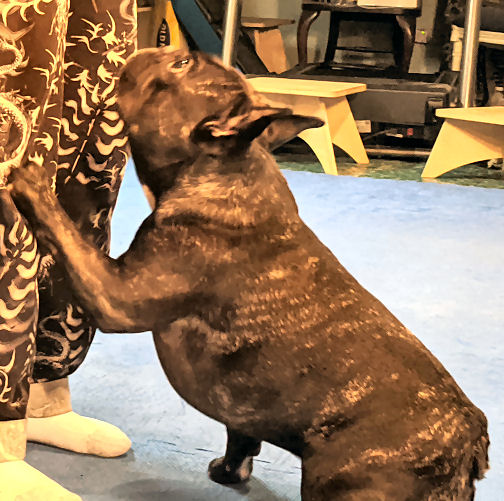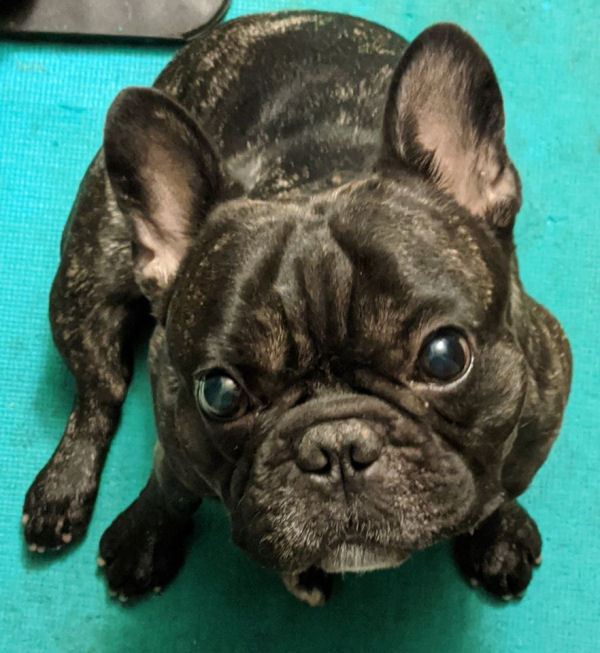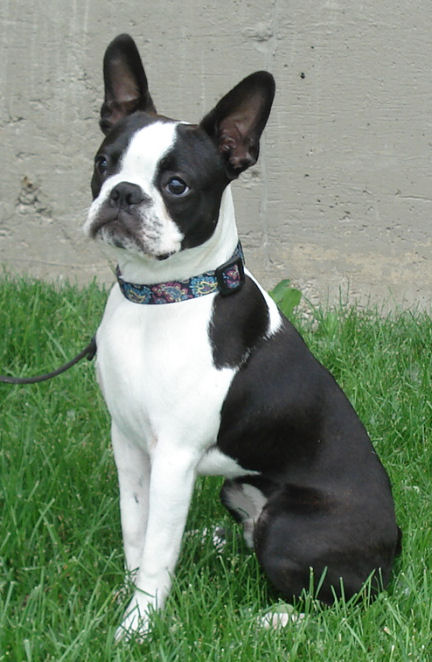The “Spin!” Dog Training Game is not only fun, but has some practical uses, too. There are a bunch of variations for the spin behavior; in place, around objects, up on hind feet (that’s “Dance!”).
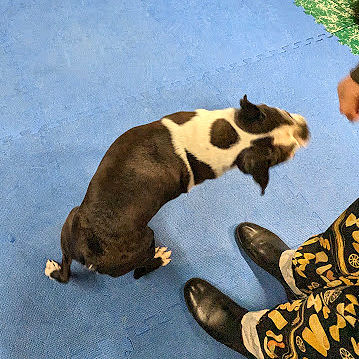
“Spin!” is one of the behaviors that’s easiest to teach by luring your dog. It’s pretty simple. Show your dog you have a treat by holding it close to your dog’s nose. Then move your hand back towards your dog’s shoulder. They should naturally turn their heads to follow your hand. Reward as your dog starts turning toward their own shoulder. Each time, take the treat a little farther back along your dog’s side as he/she catches on.
Common pitfalls
Watching our dog training students playing “Spin!” with their dogs, we noticed most people allow their dogs’ motion to create distance between them and their dogs. The dog doesn’t understand what you’re up to, so they move away to get a better look. The result is that you can no longer reach all the way around your dog, and everyone winds up confused.
This exercise is very close work. Your dog should be right with you, and, when your dog spins, should end up in exactly the same place they started. It’s an in-place movement.
You may also run up against your dog having a preference turning to one side and not the other. Most dogs, like most people, are either right- or left-handed. Unlike people, most dogs are lefties. It doesn’t really matter, except that you’ll probably need to practice the “Spin!” more on the dog’s non-dominant side. Don’t let your dog become a one-way spinner! It’s tempting to let the “easy” side prevail, but your dog will build lop-sided muscles.
Benefits of “Spin!”
Aside from being an adorable party trick, the “Spin!” can be useful, too. The first variation, teaching your dog to spin around an object, works when you’re out walking and your dog goes around the wrong side of a tree. Just asking him/her to “Spin!” back to you takes care of the problem, without any leash tangles.
To teach your dog to “Spin!” around something, try using a chair. Stand by the chair with your dog at your side. Again, show your dog you have a treat and guide him/her around the object, rewarding when they reach your other side. Take note of the motion you make with your hand, like a giant stirring move. This is an ideal hand signal to use for “Spin!” – it indicates what, as well as which direction.
Practice the “Spin!” Dog Training Game in both directions, in place as well as around an object. Always use the hand closest to the dog to reward. For the “Spin!” around an object, when your dog starts to get the idea, step away from the chair so the dog can make a complete circle.
Turn it into a “Dance!”
It doesn’t take long for most dogs to learn “Spin!” and to love it. When your dog is spinning like a top when you wave your hand in a circular motion (stirring), it’s time to take it up high, for a “Dance!” Having your dog twirl around on their hind feet is cute as heck. It’s also a good indicator of their leg and core strength.
To teach “Dance!” just hold the treat up higher than for the Spin! Dog Training Game. Keep it at a level where your dog has to reach up to get it – high enough so their front paws have to leave the ground. If your dog can’t sustain it at first, that’s okay. But be sure to reward while your dog is reaching, ideally with front paws above the ground. Remember, dogs learn from the timing and placement of rewards. If you want your dog up, keep the reward up.
Get them in shape
If your dog isn’t able to “Dance!” quite yet, check out the exercises for core strength and balance. And always try to train both sides. Start with your dog’s non-dominant side, so the training and exercises are “easier” when your dog’s a little tired.
Even the exercises we advocate only take a couple minutes at a time. And they should always be fun games your dogs play with you – not chores to be accomplished. Those of us who hate working out (both of us!) keep it fun for our dogs. If you make it fun, your dog will believe it is.
